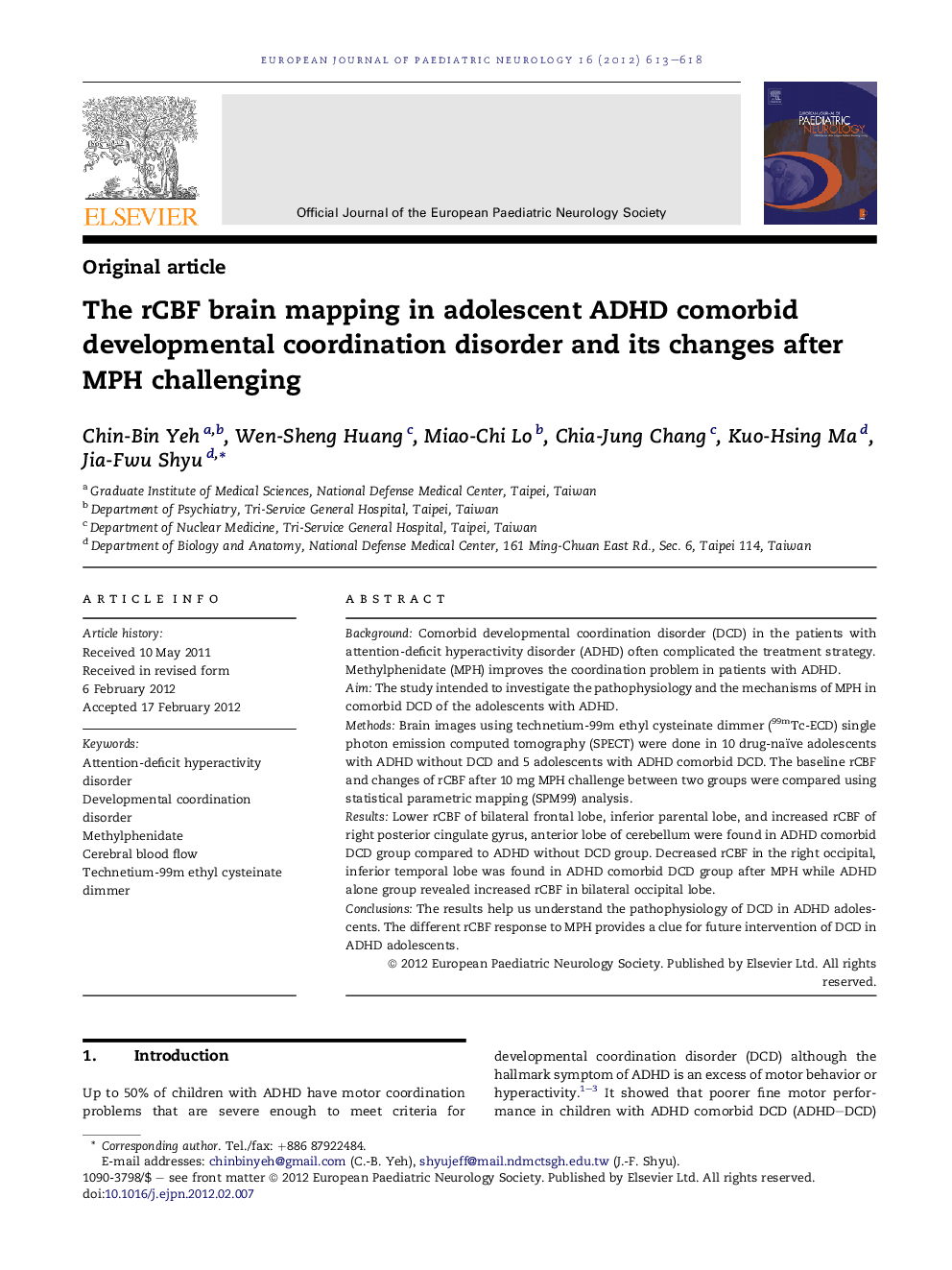| Article ID | Journal | Published Year | Pages | File Type |
|---|---|---|---|---|
| 3053900 | European Journal of Paediatric Neurology | 2012 | 6 Pages |
BackgroundComorbid developmental coordination disorder (DCD) in the patients with attention-deficit hyperactivity disorder (ADHD) often complicated the treatment strategy. Methylphenidate (MPH) improves the coordination problem in patients with ADHD.AimThe study intended to investigate the pathophysiology and the mechanisms of MPH in comorbid DCD of the adolescents with ADHD.MethodsBrain images using technetium-99m ethyl cysteinate dimmer (99mTc-ECD) single photon emission computed tomography (SPECT) were done in 10 drug-naïve adolescents with ADHD without DCD and 5 adolescents with ADHD comorbid DCD. The baseline rCBF and changes of rCBF after 10 mg MPH challenge between two groups were compared using statistical parametric mapping (SPM99) analysis.ResultsLower rCBF of bilateral frontal lobe, inferior parental lobe, and increased rCBF of right posterior cingulate gyrus, anterior lobe of cerebellum were found in ADHD comorbid DCD group compared to ADHD without DCD group. Decreased rCBF in the right occipital, inferior temporal lobe was found in ADHD comorbid DCD group after MPH while ADHD alone group revealed increased rCBF in bilateral occipital lobe.ConclusionsThe results help us understand the pathophysiology of DCD in ADHD adolescents. The different rCBF response to MPH provides a clue for future intervention of DCD in ADHD adolescents.
